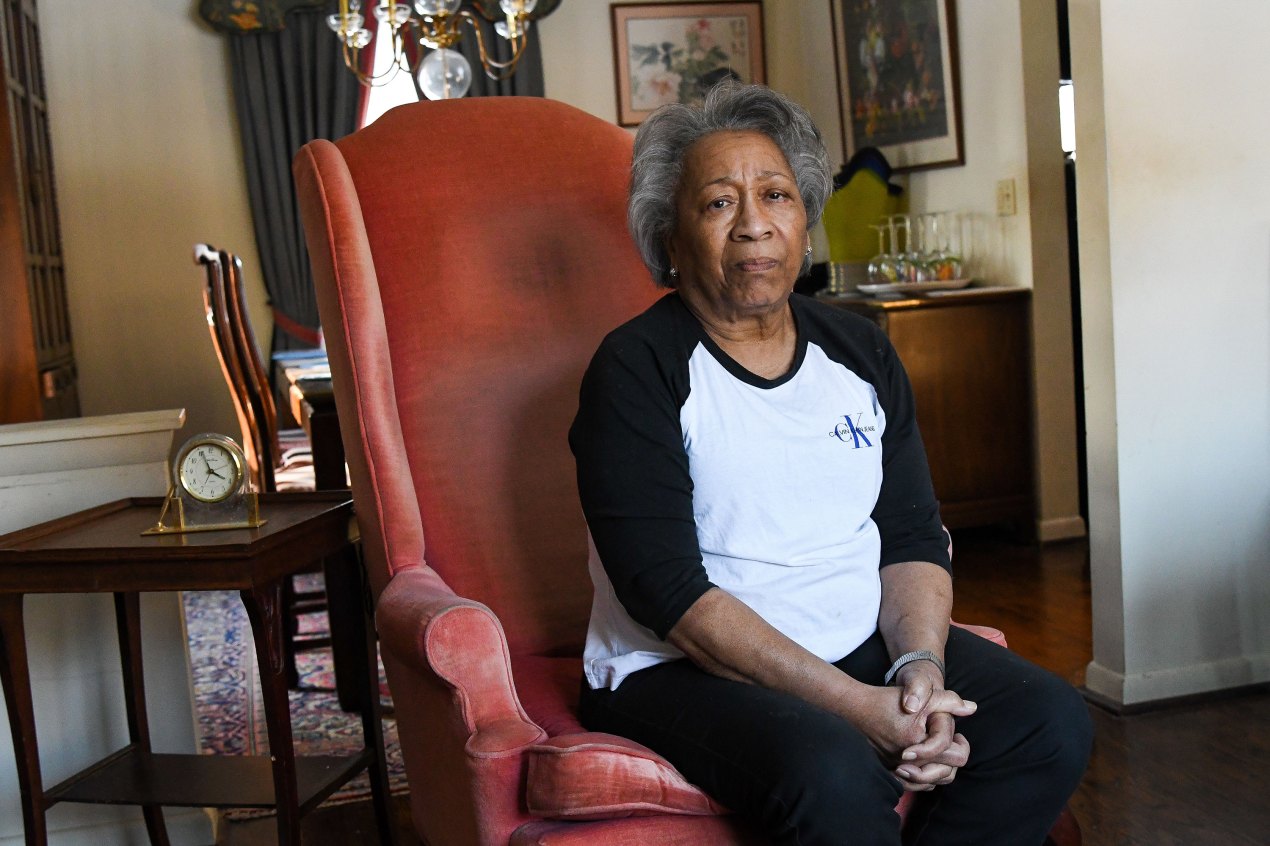“I thought this was crazy.”
Lucille Brooks
Lucille Brooks, 74, Pittsford, New York
Approximate Medical Debt: $8,000
Medical Issue: None. She was billed for her brother’s care.
What Happened: Lucille Brooks was stunned to discover a nursing home in Monroe County, New York, was suing her. She had never been a patient there. Nor had her husband. “I thought this was crazy,” she said, figuring it had to be a mistake.
The bill was for care her brother, James Lawson, received in summer 2019. He’d been hospitalized for complications from a diabetes medication. The hospital released him to the county-run nursing home, where Brooks had visited him a few times. No one ever talked to her about billing, she said. And she was never asked to sign anything.
Brooks and Lawson were part of a big family that moved north from Mississippi to escape segregation in the 1960s. Lawson had a career at the Rochester Parks and Recreation Department. Brooks worked in insurance. They lived on opposite sides of the city. “My brother always took care of his own business,” she said.
Lawson spent two months in the nursing home. A year later, Brooks was sued.
The county alleged that Brooks should have used her brother’s assets to pay his bills and that she was therefore personally responsible for his debt. Attached to the suit was an admissions agreement with what looked like Brooks’ signature.
What’s Broken: Admissions agreements often designate whoever signs as a “responsible party” who will help the nursing home collect payments or enroll the resident in Medicaid, the government safety-net program.
Consumer advocates say nursing homes slip the agreements into papers that family members sign when an older parent or sick friend is admitted. Sometimes people are told they must sign, a violation of federal law. “They are given a stack of forms and told, ‘Sign here, sign there. Click here, click there,” said Miriam Sheline, managing attorney at Pro Seniors, a nonprofit law firm in Cincinnati.
Litigation is a frequent byproduct of America’s medical debt crisis, which a KHN-NPR investigation found has touched more than half of all U.S. adults in the past five years.
About 1 in 7 adults who have had health care debt say they’ve been threatened with a lawsuit or arrest, according to a nationwide KFF poll. Five percent say they’ve been sued.
The nursing home industry has quietly developed what consumer attorneys and patient advocates say is a pernicious strategy of pursuing family and friends of patients despite federal law that was enacted to protect them from debt collection.
In Monroe County, 24 federally licensed nursing homes filed 238 debt collections cases from 2018 to 2021 seeking almost $7.6 million, KHN found. Nearly two-thirds of the cases targeted a friend or relative.
Many were accused — often without documentation — of hiding residents’ assets. The practice can intimidate people with means into paying debts they do not owe, said Anna Anderson, an attorney at the nonprofit Legal Assistance of Western New York. “People see that on a lawsuit and they think they’re being accused of stealing,” she said. “It’s chilling.”
What’s Left: When the bill came, Brooks was so worried that she didn’t tell her husband. “People like us live on a fixed income,” she said. “We don’t have money to throw around, especially when you don’t see it coming.”
Brooks turned to Legal Assistance of Western New York, a nonprofit, which has represented defendants in such cases. In time, Monroe County dropped its case against her. Brooks said she thinks the signature on the admissions agreement was forged from the nursing home’s visitor log, the only thing she signed.
Now she tells anyone with a friend or relative in a nursing home not to sign anything. “It’s ridiculous,” she said. “But why would you ever think they would be coming after you?”
About This Project
“Diagnosis: Debt” is a reporting partnership between KHN and NPR exploring the scale, impact, and causes of medical debt in America.
The series draws on original polling by KFF, court records, federal data on hospital finances, contracts obtained through public records requests, data on international health systems, and a yearlong investigation into the financial assistance and collection policies of more than 500 hospitals across the country.
Additional research was conducted by the Urban Institute, which analyzed credit bureau and other demographic data on poverty, race, and health status for KHN to explore where medical debt is concentrated in the U.S. and what factors are associated with high debt levels.
The JPMorgan Chase Institute analyzed records from a sampling of Chase credit card holders to look at how customers’ balances may be affected by major medical expenses. And the CED Project, a Denver nonprofit, worked with KHN on a survey of its clients to explore links between medical debt and housing instability.
KHN journalists worked with KFF public opinion researchers to design and analyze the “KFF Health Care Debt Survey.” The survey was conducted Feb. 25 through March 20, 2022, online and via telephone, in English and Spanish, among a nationally representative sample of 2,375 U.S. adults, including 1,292 adults with current health care debt and 382 adults who had health care debt in the past five years. The margin of sampling error is plus or minus 3 percentage points for the full sample and 3 percentage points for those with current debt. For results based on subgroups, the margin of sampling error may be higher.
Reporters from KHN and NPR also conducted hundreds of interviews with patients across the country; spoke with physicians, health industry leaders, consumer advocates, debt lawyers, and researchers; and reviewed scores of studies and surveys about medical debt.
